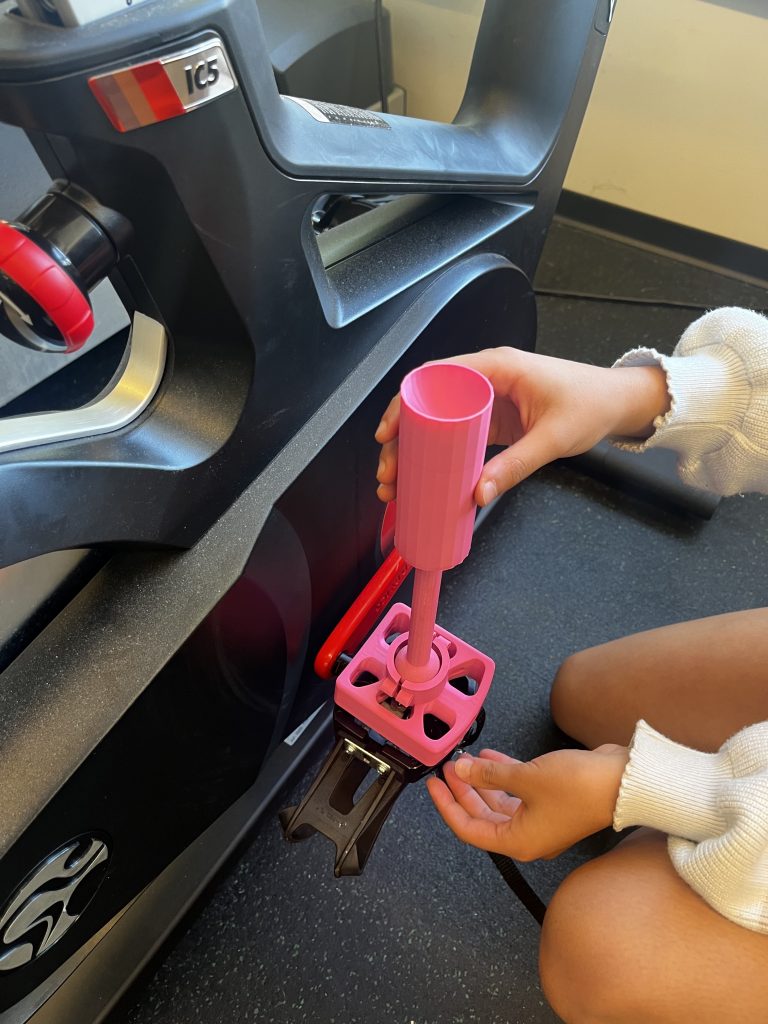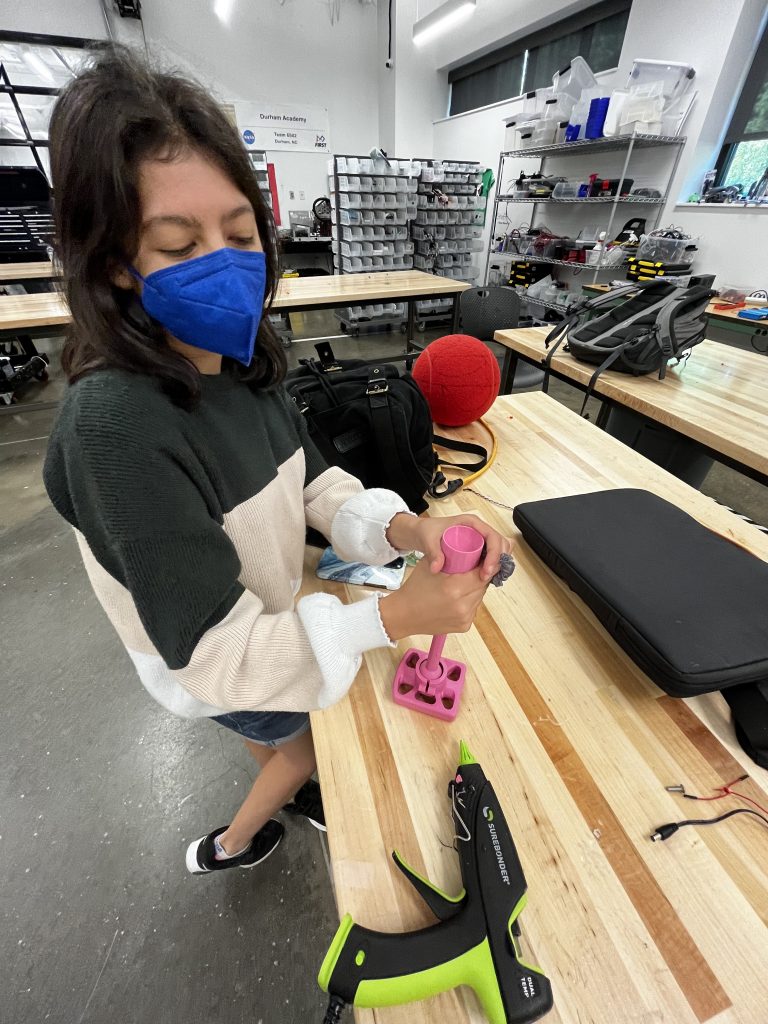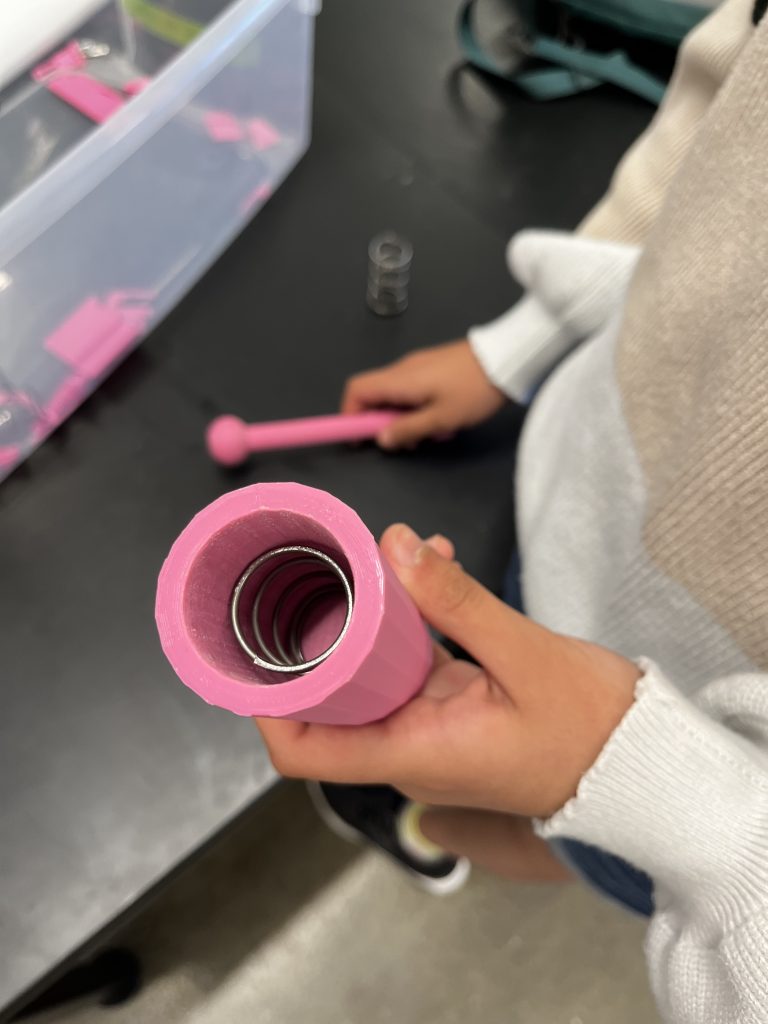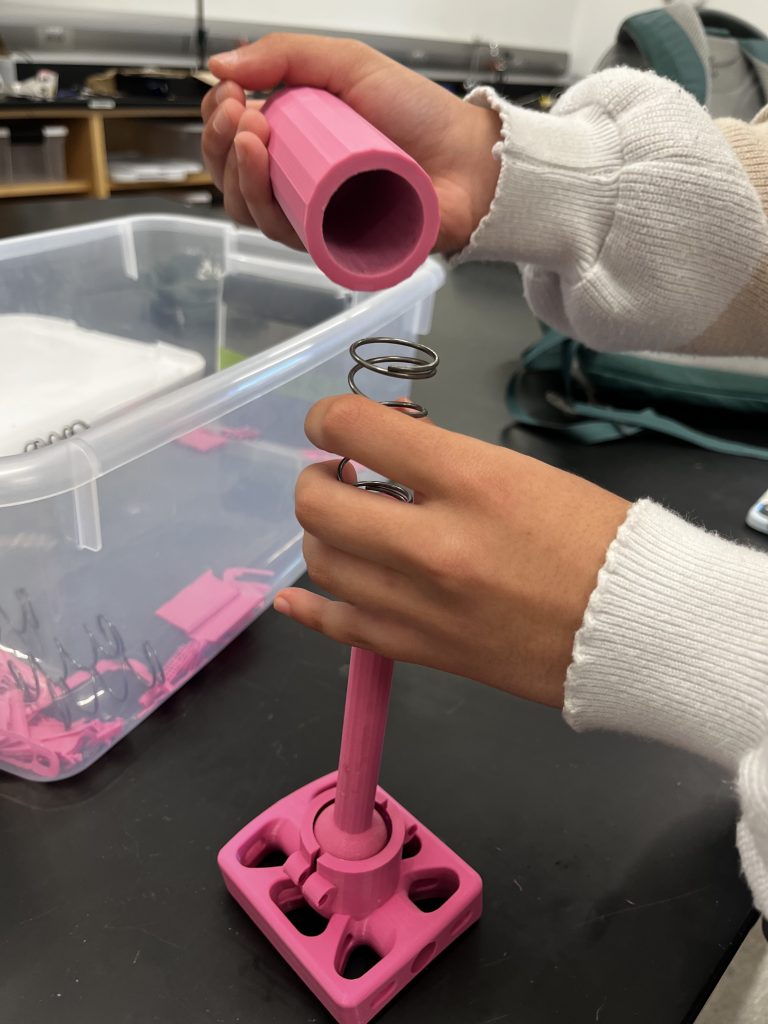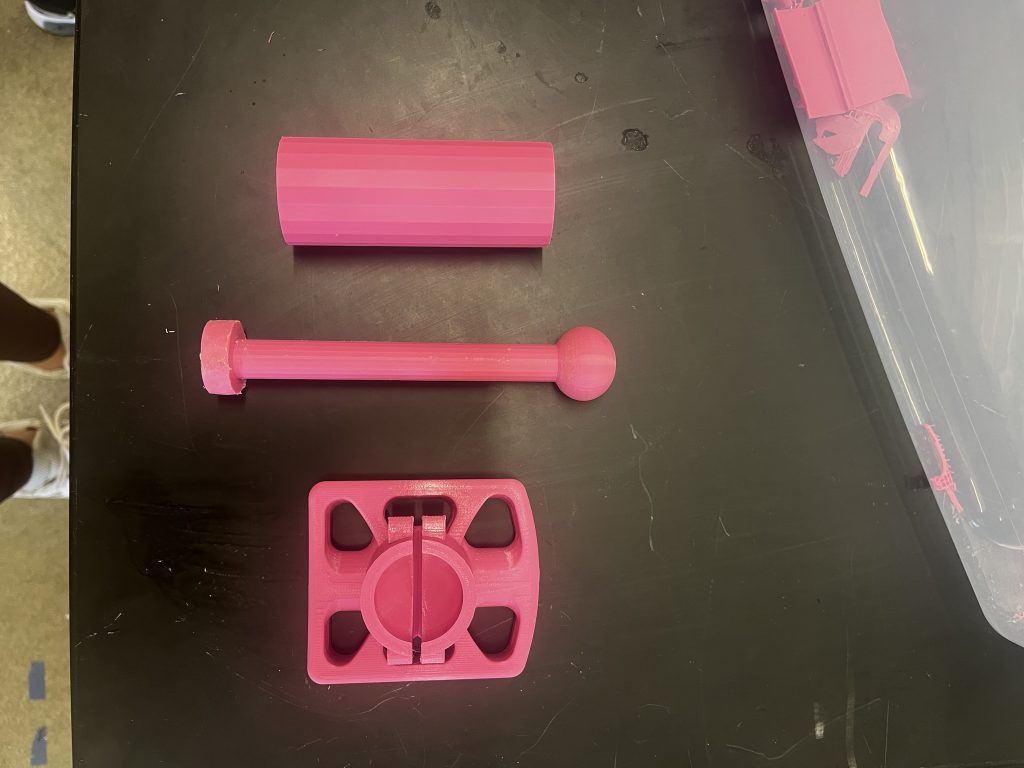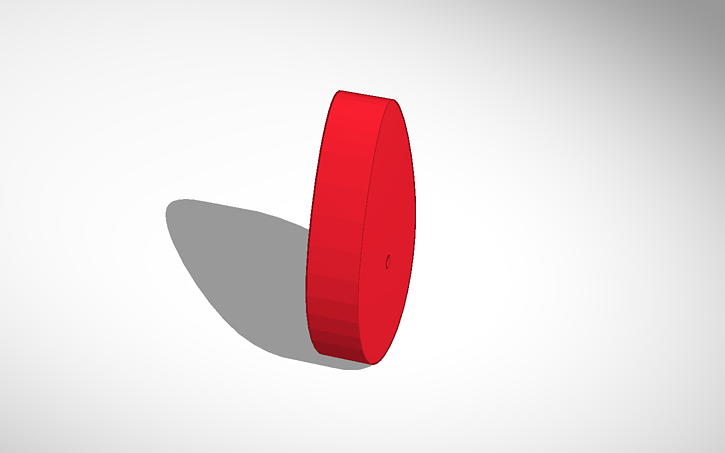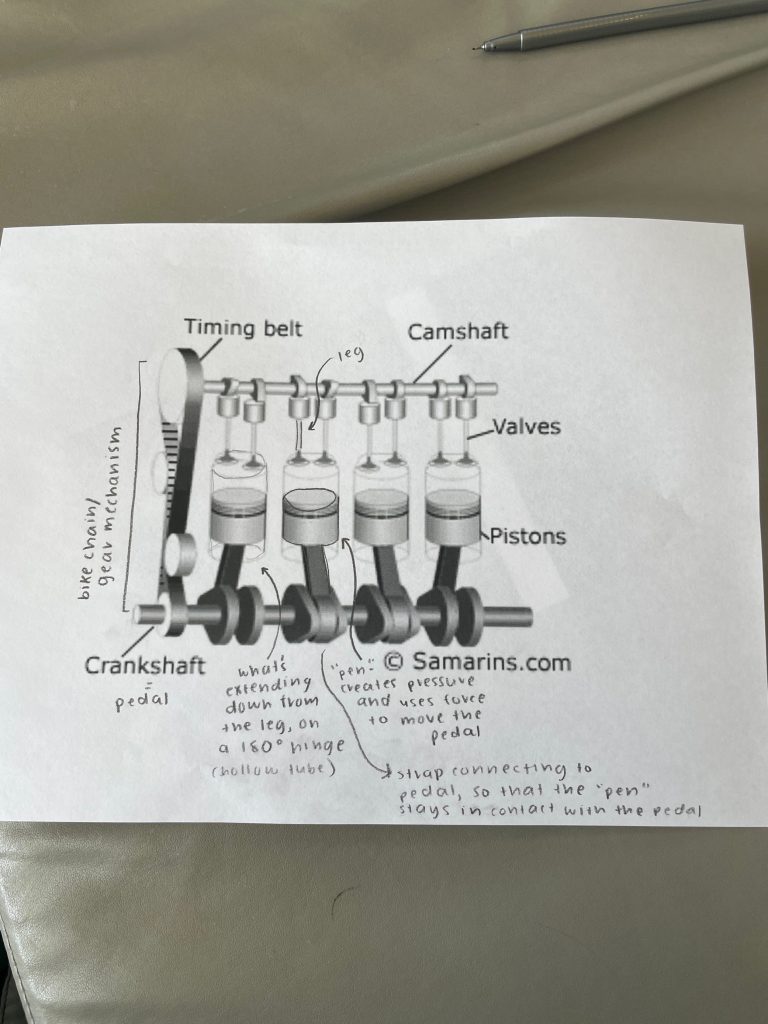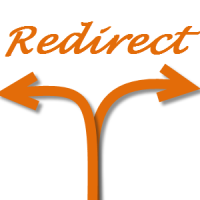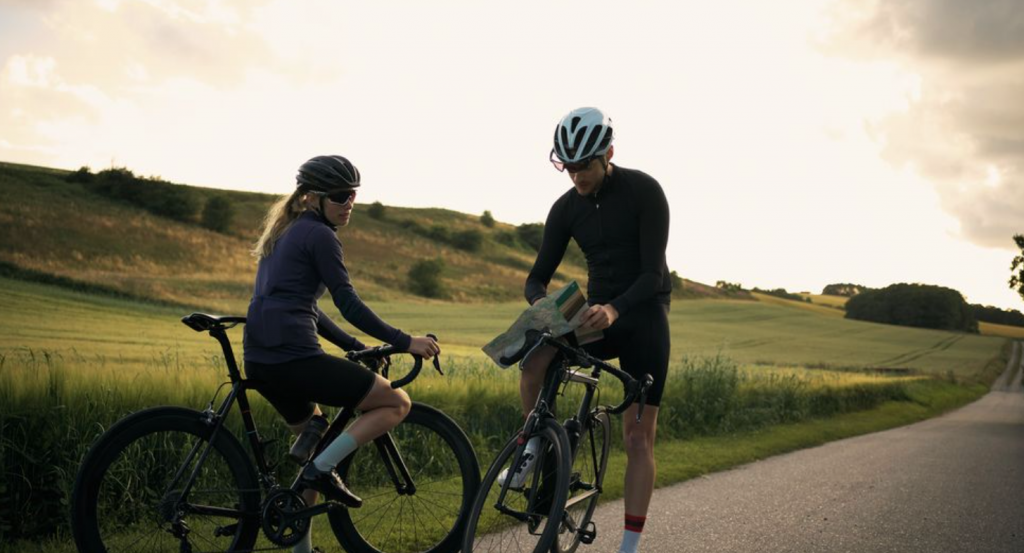What is your favorite thing that you learned?
My favorite thing I learned throughout this whole process was probably that all ideas can be laid out physically if you are really passionate about it. We never thought we would be holding an actual 3D prototype of our design. Adding on to our 3D designed prototype, I also re-learned how to use tinker-cad after learning it briefly at a previous summer program which was really nice because I got to experiment a little more and try and remember what I already had some experience in.
What new questions do you have about this topic?
Well, Neta and I realized after testing our prototype on an actual bike pedal, that the bike pedal itself needs to be sturdy enough to secure our prototype which is something I want to experiment with more. I think looking into different parts of the actual bike that affect our prototype will be helpful in terms of future success.
What worked out as expected?
Building a 3D prototype definitely happened just as we had hoped from the start of our journey, and luckily we made it happen just in time before exams. There were some errors with our 3D print, but we worked around them which allowed for even more creativity!
What was surprising/exciting/challenging?
I mentioned this above, but our dimensions and measurements we used in tinkercad to 3D print our prototype were wrong because when we pieced the different parts together, the measurements were off by a slight miscalculation which prevented us from moving forward. This was challenging because we had to physically adjust the measurements by shaving off some of the 3D print and creating tolerance which was definitely a new and exciting experience for me!
What did you learn about your learning process?
I learned when making a plan, it is important to think reasonably. What I mean by this is think ahead and try to imagine future steps before getting to a point in time when you realize you are really behind on your goals. This is because there are always going to naturally be setbacks. For example, we planned on having the 3D print done in a week, but it ended up taking 2 weeks. Luckily we left enough time at the end of the year to adjust our schedule.

